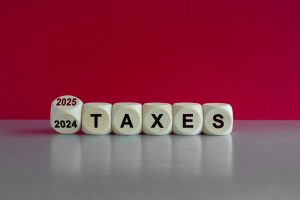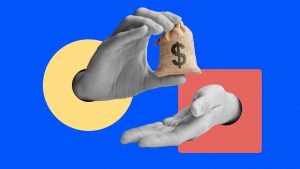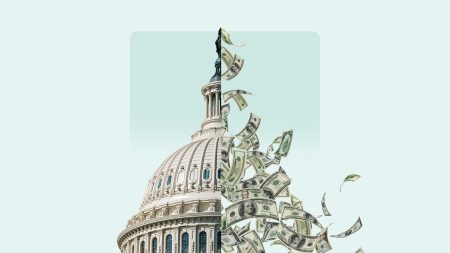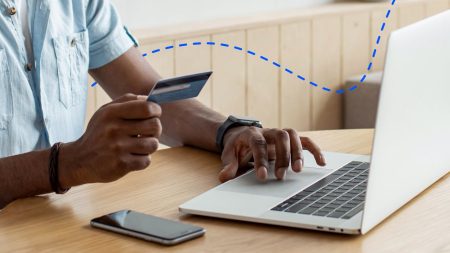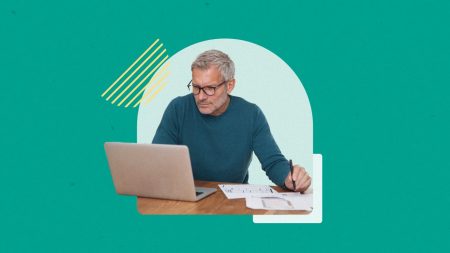Key takeaways
- Lower-income households are struggling with disproportionately high debt, especially as the cost of living is increasing.
- Focus on understanding what you owe, creating a budget, choosing a debt paydown strategy and avoiding new debt. You might also look for creative ways to increase income.
- If you’re feeling overwhelmed by debt, you might consider strategies like debt consolidation or even bankruptcy.
Rising costs are creating serious financial strain for many families, especially low-income families without the means to cover unexpected expenses out of pocket. Low-income families are often forced to take on debt when the water heater needs to be replaced, the car requires repairs or the heating bill is higher than expected. The more these debts pile up, the harder it is to pay them off.
A 2024 consumer debt study found that the average American carries $105,056 in debt, with credit card balances averaging $6,730 — up 3.5 percent from the previous year. Lower-income households are especially hard hit as their debt payments account for a larger percentage of their income, leaving them with less money to cover living expenses and pay down debt balances.
Fortunately, you can take steps today to get out of debt, even with a low income. Here are some simple ways to start making progress toward financial freedom.
1. Know what you owe
Start your journey out of debt by sitting down, taking a deep breath and determining what you owe and to whom. Getting a handle on your debt may feel overwhelming, but having that information in black and white provides a starting point for planning.
Make a list of:
- Current credit cards and loan balances, including the lender/creditor for each account
- Interest rates on each debt
- Minimum monthly payments
- Payment due dates
Don’t forget to include medical bills, mortgages or rent, utility bills and other expenses.
2. Create a budget
A monthly budget is a list of your income and expenses. It allows you to see where your money goes and look for ways to manage your money more efficiently.
“Creating a budget is important for anyone who has a financial goal, especially when it comes to reducing credit card debt,” says Evan Press, a Certified Financial Planner with Equitable Advisors, LLC. “Doing so helps manage a person’s finances, so they can pay off that debt as soon as possible to avoid high interest rates.”
Whether you build your budget on a spreadsheet, rely on a budgeting app or simply jot it down on paper, be sure to:
- List all sources of income.
- Determine fixed expenses (which don’t change), including auto payments, student loan payments and rent.
- Figure out variable expenses (which do change), including groceries, utilities, clothing and other costs.
- Subtract the total expenses from the total income.
The remaining amount, if there’s any left, is known as discretionary income.That discretionary income is what you’ll use to pay down debt faster so you can get out of debt sooner. If you don’t have any extra money, you’ll need to find ways to increase the income you have or spend less on variable expenses.
3. Resist taking on new debt
If you’ve gotten into the habit of relying on credit cards for unnecessary purchases, now is the time to stop. Credit card charges are just delaying the inevitable payment while digging the hole deeper by charging interest on your purchases.
Freeze unnecessary spending and avoid applying for new credit cards, store cards or other lines of credit.
However, there is one important exception to this rule: You may want to consider using a balance transfer credit card (and its 0 percent introductory APR) to consolidate debt. This allows you to transfer the balances on your existing high-interest credit cards to a credit card that doesn’t charge any interest during the introductory period. As long as you pay off the balance on your new transfer card before the introductory period expires, you can avoid paying interest on your credit card debt. These cards usually require high credit scores.
4. Pick a debt paydown strategy
The discretionary income from your budget can be used to strategically pay down your debt. Depending on your situation, you might choose the debt snowball strategy or the debt avalanche strategy to start getting out of debt.
While you work on paying off your debt, also put some money aside for an emergency fund.
Debt snowball: Starting small
With the debt snowball strategy, you pay the minimum amount to all creditors and use what you can of your discretionary income to make an extra monthly payment on the account with the smallest balance. When you’ve paid off the account, turn your attention — and the extra money — to the next-smallest balance and dedicate all extra dollars to paying that down.
Repeat the process until all balances are down to zero. As you pay down debt, your available money “snowballs” into larger amounts, giving you more resources to handle the remaining debt.
The benefit here is a quick win. Paying the smallest balance first can be a psychological boost, motivating you to move forward in paying down your debt. However, this can be a costlier strategy. While you pay down those small-balance accounts, credit card balances and loans with higher interest rates continue growing.
Debt avalanche: Going big
Like the snowball method, the debt avalanche strategy means making minimum payments to all creditors and lenders. But in this case, you use your discretionary income to pay the debt with the highest interest rate.
When that account is paid down, you focus on the debt with the next-highest interest rate. Once that account has a zero balance, work on the next-highest-interest-rate debt. Repeat and continue until all debt is paid.
The debt avalanche approach removes expensive debt first, saving you costly compounded interest rates. You need patience and motivation, especially if that high-interest-rate account is one of your larger debts. It could take several months or even years to pay it down.
Add debt snowflakes to your snowball or avalanche
In addition to the above paydown strategies, you can add debt snowflakes. Take steps toward small savings from everyday activities, then direct those few extra dollars toward your debt.
Small savings efforts can include:
- Using grocery store coupons and buying generic products.
- Relying on carpooling or public transportation to save gas.
- Selling items on online marketplaces or through garage/yard sales.
- Resetting the thermostat (and other utility savings).
- Using cash-back incentives from credit card usage to pay down debt.
These small payments won’t clear your debt overnight. However, as multiple snowflakes lead to massive snow drifts, these small savings can reduce your debt over time.
You also might want to consider asking your creditors about hardship programs for credit cards or assistance programs for medical or utility bills. Any additional help can provide some relief.
5. Explore aggressive debt paydown options
If the steps above aren’t enough to help get you out of debt, consider more aggressive strategies such as debt consolidation loans and debt settlement.
Debt management plan
A debt management plan can help you get a more manageable monthly payment. A credit counselor will work to negotiate with creditors to help you avoid collection calls, save on interest and get out of debt sooner.
Debt management plans are only available for secured debts.
Debt consolidation loans: Rolling many debts into one
With a debt consolidation loan, you obtain a lump sum from a lender specifically to pay off your existing debts. You’re then responsible for repaying that consolidation loan.
Most debt consolidation loans carry a fixed interest rate that can be lower than variable credit card interest rates. These loans can also make budgeting more manageable. You pay a single fixed amount rather than paying off multiple accounts with variable interest rates each month.
“Consolidation loans can be effective as long as the interest rate and fees to move the debt are better than the rates or fees the person currently has,” Press says. “Just because it’s consolidated doesn’t mean it’s better.”
These loans are generally available only to those with good or excellent credit scores. That credit score also determines a consolidation loan’s term and interest rate.
You don’t need a high income to maintain a good credit score, but you must:
- Pay all bills on time.
- Keep your credit card balances (credit utilization ratio) below 30 percent of each card’s limit.
You also should review your credit reports regularly to ensure there are no mistakes.
Debt consolidation can be a good strategy if you owe multiple balances and have a good credit score.
Debt settlement: Negotiating to pay less
Debt settlement, sometimes called debt relief, is a strategy in which you and a creditor agree to settle the amount on your card or loan for less than the amount you owe. To make this work, you generally need to have a lump sum to be able to pay in exchange for having the rest forgiven, and you generally need to be behind in payments already.
There are two paths to debt settlement:
- Do it yourself: Handling debt settlement yourself involves contacting each creditor you owe, presenting your case and negotiating a settlement amount. This can help you save money and give you better control over the process. It also requires time, patience, perseverance and negotiating skills.
- Hire a company: If you don’t have the time or patience to deal with every creditor, you could work with a third-party debt settlement company. That company contacts creditors on your behalf and negotiates an agreement that works for both sides. Instead of paying your creditors, you’ll pay into a special escrow account which will be used to pay the creditor plus the negotiator’s fees once a settlement is reached.
Debt settlement is a method of last resort. The settlement remains on your credit report for seven years, and your credit score takes a hit when you stop making payments to your creditors. There’s also no guarantee that the settlement will work. Furthermore, the IRS considers the forgiven amount as ordinary income, which can result in a higher tax bill.
Bankrtupcy vs. debt settlement
If you’re considering debt settlement because your debt is insurmountable, you may want to consider bankruptcy instead. If you aren’t likely to ever get traction on repaying debt, bankruptcy may be the best way to get your finances on track.
Extra part-time work might be helpful if you’re still struggling to pay off debt with a low income. Ask your employer if there are extra hours available. If not, the gig economy offers multiple opportunities to earn money through in-person or online efforts.
If you go this route, be sure the extra work fits your schedule. Also, check to be sure your primary employer does not have restrictions on part-time work.
The bottom line
Getting out of debt with a low income isn’t easy, but it is often possible. And you owe it to yourself to manage your debt now so it doesn’t spiral out of control.
Assessing your current debt, creating a budget, resisting new debt and choosing a debt paydown strategy can dramatically reduce what you owe. If you need a more aggressive approach, debt consolidation and debt settlement are worth careful consideration.
Take action today to reduce your debt and improve your financial stability.
Read the full article here


